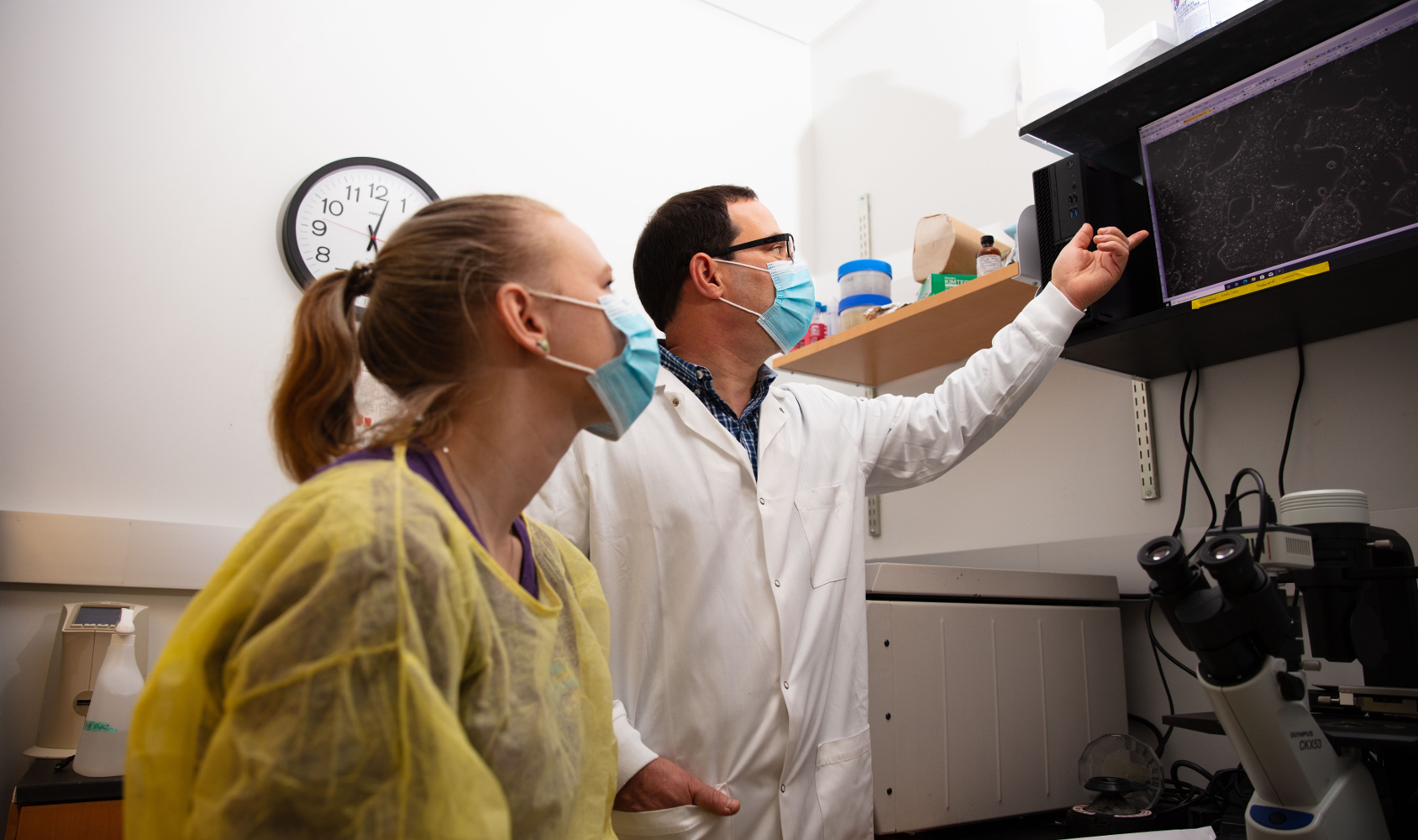Chemical biology of the epigenome: Transforming human health and disease

Researchers at UNC-Chapel Hill are leading a Chemical Epigenomics Creativity Hub to address emerging challenges and novel approaches at the interface of epigenetics and human health.
Challenge
The epigenome is a multitude of chemical compounds that can tell the genome what to do. The human genome is the complete assembly of DNA–about 3 billion base pairs– that makes each person unique.1 Epigenetics determines the “when” and the “how” of gene expression.
As described by the National Human Genome Research Institute:
Lifestyle and environmental factors (such as smoking, diet and infectious disease) can expose a person to pressures that prompt chemical responses. These responses, in turn, often lead to changes in the epigenome, some of which can be damaging. However, the ability of the epigenome to adjust to the pressures of life appears to be required for normal human health. Some human diseases are caused by malfunctions in the proteins that “read” and “write” epigenomic marks.
Solution
The Chemical Epigenomics Hub, which is first-ever epigenetics and chemical biology initiative, promotes collaboration among expert UNC-Chapel Hill faculty across the campus. Supported by the Office of the Vice Chancellor for Research, Creativity Hubs are evolving virtual research networks that concentrate talent and resources on bold ideas for defined periods of time — free from typical organizational boundaries, with the goal of moving new discoveries and ideas into practice. The Chemical Epigenomics Hub is led by Brian Strahl, PhD (lead PI), interim chair of biochemistry and biophysics at the UNC School of Medicine, and Samantha Pattenden, PhD (co-PI). Through this initiative, labs from the UNC School of Medicine, Eshelman School of Pharmacy, Gillings School of Global Public Health, Lineberger Comprehensive Cancer Center, and the College of Art and Sciences are collaborating on projects to address emerging challenges and novel approaches at the interface of epigenetics and human health.
Impact
The Creativity Hub creates a broad and sustainable platform to addressing challenges in biology and human health, which will have an impact on society, the environment, and the lives of both North Carolinians and global citizens. Currently, there are three diverse projects planned to demonstrate the opportunities of this exciting collaborative effort.
Public Health: Identifying the Epigenetics of Environmental Exposure
Studies from the emerging field of environmental epigenetics have demonstrated that an individual’s epigenome both reflects their chemical exposure history and plays a key role in determining response to future chemical exposures. This project is characterizing inter-individual epigenetic variation and identifying “hot spots” of epigenetic variability within the human genome. It will also determine whether an epigenetic structure-based screening platform can be used to identify chemical toxicity and predict the response to toxic chemical exposures.
Translational Oncology: Targeting Oncogene-Induced Epigenetic Change as a Therapeutic Strategy
This project is employing gene manipulation strategies to identify the target of UNC0621, an uncharacterized compound that affects Ewing sarcoma chromatin signatures and halts tumor cell growth. Ewing sarcoma is a cancerous tumor that grows in the bones or in the tissue around bones2. It is often found in the legs, pelvis, ribs, arms or spine. Ewing sarcoma and can spread to the lungs, bones, and bone marrow. The project is also working to identify strategies to destabilize the gene EWS-FLI1 (the rearrangement of genes EWSR1 AND FLI1 so that they are joined), whose presence is associated with all cases of Ewing sarcoma. By destabilizing the gene, the treatment offers hope for patients.
Model Organisms: Platforms for Biological Discovery and Development of Novel Therapeutics
This project is combining the experimental power of chemical biology and animal genetics to explore normal biology and to determine the cellular and molecular mechanisms underlying biological changes associated with pharmacologic treatments. Fruit flies will be used, as their histones have identical amino acid sequences. The histone gene of the fruit flies can be replaced with mutant copies. By treating flies with compounds that target epigenetic regulators, there will be an unprecedented opportunity to combine genetic and pharmacological manipulation of the epigenome.
